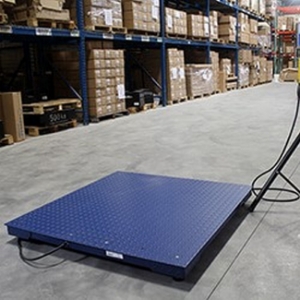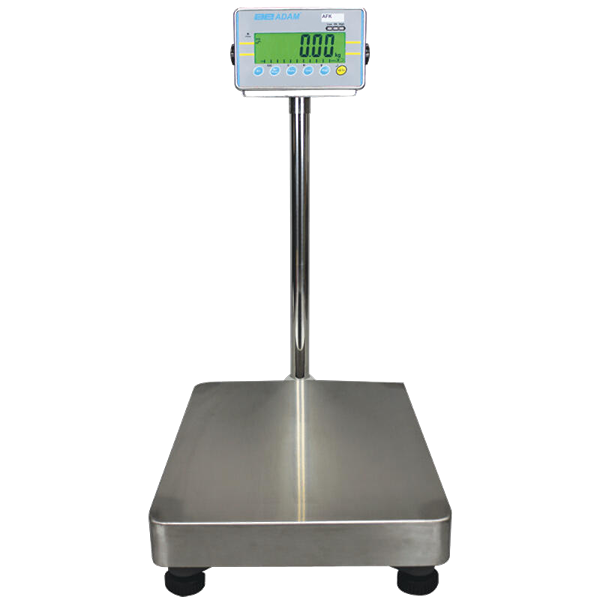Just How Commercial Scales Job: An Extensive Summary for New Users
Comprehending the mechanics behind industrial scales is critical for brand-new individuals who intend to guarantee accuracy in their measurements. These tools rely on load cells and pressure gauge innovation to transform weight right into a measurable layout, yet the nuances of their operation extend past plain capability. From the numerous types available to the necessary methods for appropriate usage and maintenance, each facet plays a substantial function in accomplishing reputable outcomes. As we discover these elements, one should consider how these components engage to improve performance in varied industrial applications.
Basics of Industrial Scales
Industrial ranges are necessary tools made use of across numerous fields, consisting of production, logistics, and farming, to ensure precise weight dimensions of hefty loads. The essential principle behind industrial ranges involves the conversion of weight right into a measurable type that can be displayed electronically or analogically. These scales utilize numerous systems, such as lots cells or mechanical levers, to figure out the weight of objects put upon them.

Along with their measurement abilities, industrial scales are designed to withstand harsh settings, including robust building and construction that resists dirt, dampness, and heavy impacts. Calibration and maintenance are essential to make certain accuracy, as even small disparities can lead to significant economic ramifications. By comprehending the basics of commercial scales, users can value their value in different commercial applications.
Kinds of Industrial Scales
Numerous sorts of commercial ranges accommodate the diverse needs of various industries, each designed to take care of details considering tasks with accuracy and dependability. Among one of the most common kinds are floor ranges, which are suitable for evaluating cumbersome and heavy things. These scales commonly include large systems and can accommodate palletized products, making them essential in stockrooms and delivery facilities.
Another type is bench ranges, which are often utilized for smaller sized items in manufacturing and retail setups. They give precise dimensions for items that require precision, such as chemicals or components in setting up lines (Industrial Scales). For mobile operations, portable scales use adaptability and convenience of transportation, suitable for fieldwork or momentary installments
In addition, specialized ranges like checkweighers are made use of in manufacturing lines to keep top quality control by making certain that items satisfy weight specs. Each type of industrial scale plays a critical function in boosting operational effectiveness and accuracy across different sectors.
Exactly How Evaluating Mechanisms Job
Evaluating systems are essential elements that allow exact dimension of mass across different industrial ranges. These systems use various concepts of physics and engineering to offer precise weight analyses, necessary for stock management, top quality control, and compliance with governing requirements.
One common kind of evaluating this link mechanism is the lots cell, which operates the concept of stress gauges. When a lots is applied, the lots cell warps slightly, creating an electrical signal symmetrical to the weight. This signal is then exchanged a readable weight dimension by the scale's electronic devices.
Another extensively used mechanism is the mechanical equilibrium, which employs a system of bars and weights. Industrial Scales. This technique counts on the concept of stability, where the weight of the item being gauged is balanced versus known weights, permitting straight dimension
Furthermore, hydraulic and pneumatic ranges leverage fluid characteristics principles to determine weight. These systems make use of the pressure applied by a load to establish weight, providing high precision for massive tons.
Correct Usage Methods
When making use of commercial scales, adhering to appropriate use techniques is important for keeping and ensuring precise dimensions devices honesty. First and foremost, it is necessary to pick the ideal scale for your particular application, as scales vary in capability and accuracy.
Before evaluating, make sure that the range is positioned on a secure, degree surface area devoid of resonances or disruptions. This will certainly help to lessen errors brought on by outside aspects. Furthermore, adjust the scale according to the producer's specs prior to make use of, guaranteeing that it is working properly.
When putting items on the scale, disperse the weight equally to stay clear of tipping or harming the devices. Always allow the range to maintain prior to videotaping the weight, as variations might occur during first positioning. For bulk materials, use containers that are appropriate for the range dimension to stop overloading.
Additionally, prevent placing overly warm or chilly items straight on the range, as temperature variants can impact accuracy. Last but not least, keep the evaluating system tidy and totally free of particles to avoid contamination and ensure trustworthy outcomes. By complying with these techniques, individuals can optimize the performance and durability of their industrial scales.
Upkeep and Calibration Tips
Guaranteeing the long life and accuracy of commercial ranges calls for persistent upkeep and routine calibration. A preventive upkeep schedule is important; it needs to include regular inspections to determine damage, especially on lots cells and other sensitive parts. Routinely cleansing the range's surface and making sure the bordering location is devoid of particles will certainly aid keep its integrity and performance.
Calibration is similarly essential and ought to be done at normal periods or whenever the scale experiences significant modifications in temperature level, moisture, or physical variation. Make use of qualified calibration weights that are traceable to nationwide requirements for accuracy. Paper each calibration session meticulously to track performance in time and determine any type of patterns or reoccuring concerns.
Additionally, bear in mind the scale's atmosphere. Prevent putting it near resources of resonance, electro-magnetic interference, or extreme temperatures, as these elements can negatively impact measurements. Train all drivers on correct range usage and maintenance protocols to guarantee constant performance and accuracy. By sticking to these upkeep and calibration ideas, individuals can enhance the reliability of their commercial ranges, making sure ideal operation in any kind of setup.
Verdict

Recognizing the technicians behind commercial scales is vital for new users who want to make sure accuracy in their measurements.Industrial ranges are crucial devices used throughout different industries, including manufacturing, logistics, and farming, to make sure exact weight dimensions of hefty tons. The essential principle behind commercial scales involves the conversion of weight into a quantifiable kind that can be shown digitally or analogically. By understanding the basics of commercial ranges, individuals can appreciate their importance in numerous commercial applications.
In conclusion, understanding the procedure and upkeep of commercial scales is essential for making sure precise weight measurements in Continue various applications. (Industrial Scales)